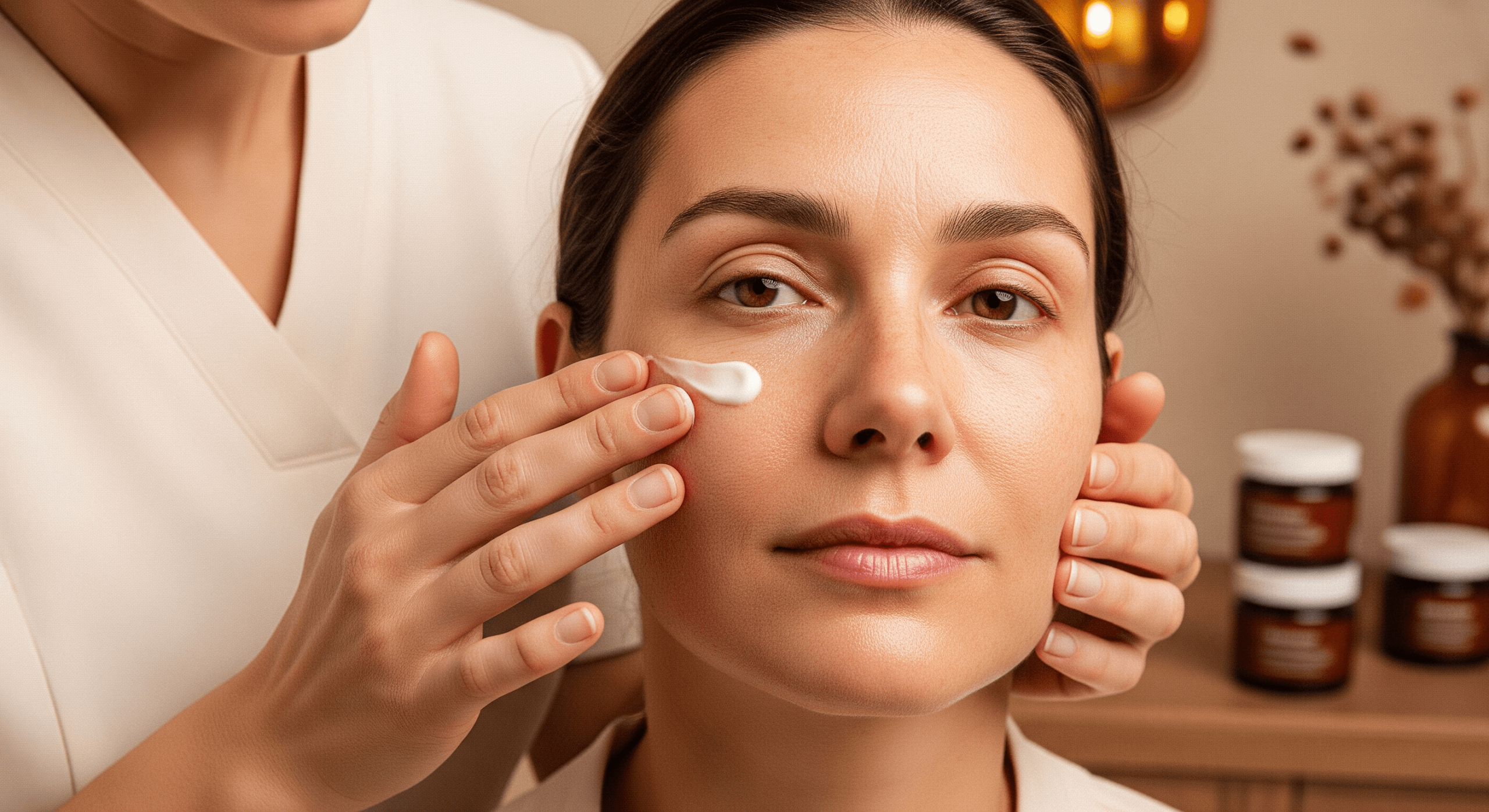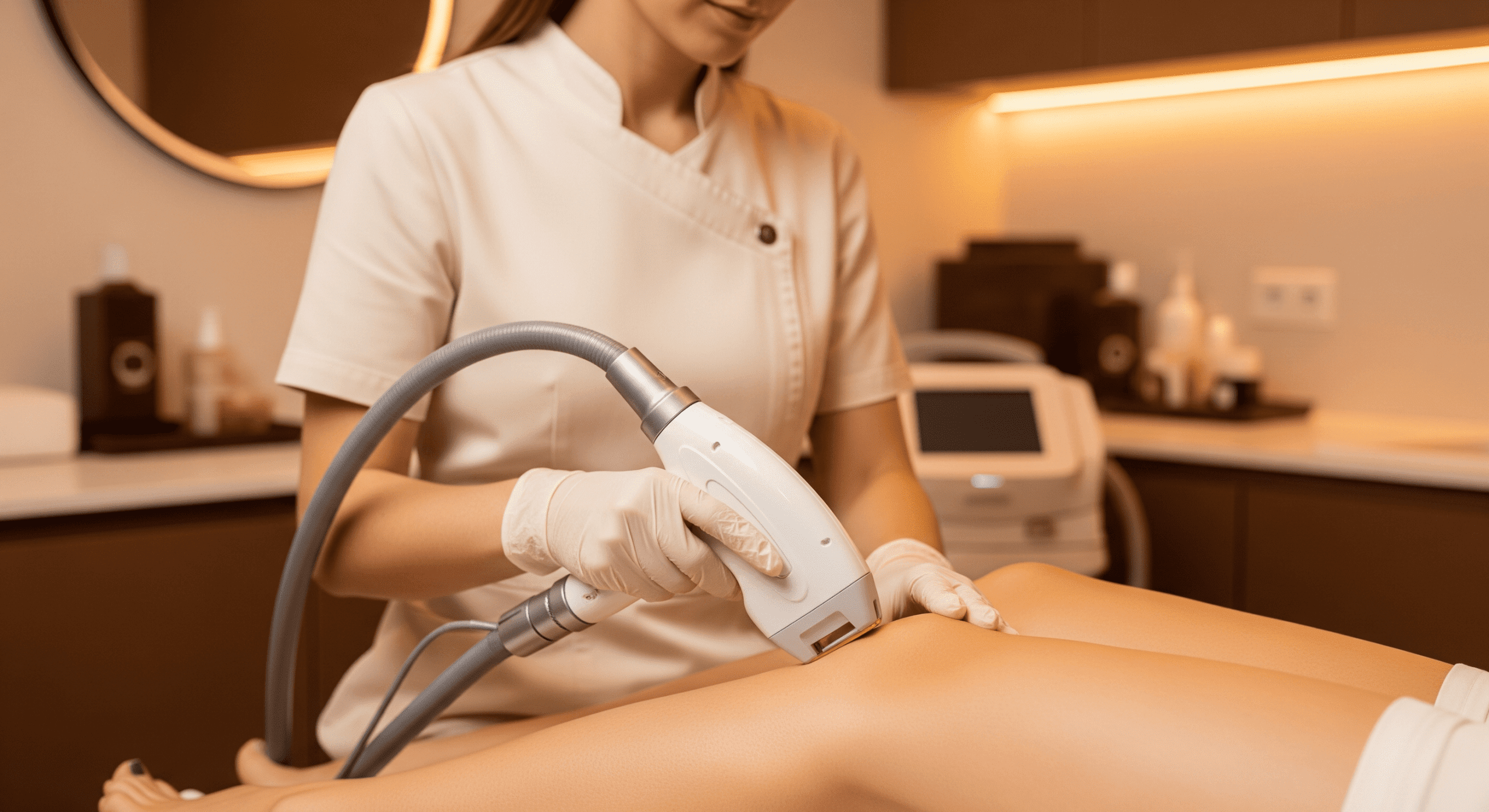Whether it’s a dark spot from a pimple that overstayed its welcome or mysterious patches that appeared after sun exposure, hyperpigmentation is one of the most common—and frustrating—skin concerns. It affects all skin tones and types, yet many people struggle to understand why it happens or how to fix it.
In this deep-dive, we unpack the causes of hyperpigmentation, the different forms it takes, and the best treatment strategies to even out your skin tone for good. Say goodbye to guesswork and hello to science-backed solutions.
Jump To:
TLDR – Quick Guide
- What is Hyperpigmentation?
It’s the overproduction of melanin, leading to dark spots or patches on the skin. - Causes:
Sun exposure, hormonal changes, inflammation, aging, and even certain medications. - Types:
Post-inflammatory, melasma, sunspots, and age spots. - Treatment Options:
Topicals (like retinoids, vitamin C), laser therapy, chemical peels, and consistent sun protection. - Prevention:
Daily sunscreen use and avoiding skin trauma are key.
Detailed Breakdown
What is Hyperpigmentation?
Hyperpigmentation occurs when your skin produces excess melanin—the pigment responsible for skin color. While harmless in most cases, it can make your complexion look uneven and is often a cosmetic concern.
Melanin overproduction can be triggered by many factors, and while it doesn’t pose health risks, it can impact confidence. The good news? Most types of hyperpigmentation can be treated or significantly reduced with the right strategy.
Common Causes of Hyperpigmentation
- Sun Exposure
UV rays stimulate melanin production as a natural defense. Chronic exposure without protection leads to sunspots, especially on the face, chest, and hands. - Hormonal Changes
Estrogen and progesterone fluctuations (think pregnancy, birth control) can trigger melasma, a type of hyperpigmentation that appears in patches. - Post-Inflammatory Hyperpigmentation (PIH)
This happens when the skin darkens after inflammation—common after acne, eczema, or cuts. - Aging
Age spots (a.k.a. liver spots) are common in older adults due to cumulative sun exposure and skin thinning. - Medications and Medical Conditions
Certain drugs (like chemotherapy or antibiotics) and diseases (like Addison’s disease) can also contribute to pigmentation changes.
Types of Hyperpigmentation
Understanding the type of hyperpigmentation you have is crucial for effective treatment:
- Melasma: Patchy brown or grayish spots, mostly on cheeks, forehead, and upper lip.
- Post-Inflammatory Hyperpigmentation (PIH): Flat, discolored spots left behind after acne, burns, or other trauma.
- Sunspots (Solar Lentigines): Small darkened patches caused by prolonged sun exposure.
- Freckles: Genetic and sun-triggered; often appear in childhood but darken with sun exposure.
- Age Spots: Common in people over 40; usually appear on sun-exposed areas.
Treatment Options for Hyperpigmentation
The best treatment depends on the type and cause of your pigmentation, but here’s a breakdown of effective strategies:
1. Topical Treatments
- Vitamin C: Antioxidant that brightens and inhibits melanin production.
- Hydroquinone: A strong skin-lightening agent (use with caution and under professional guidance).
- Retinoids: Stimulate cell turnover and fade dark spots.
- Niacinamide: Reduces inflammation and pigmentation without irritation.
2. Chemical Peels
Use acids like glycolic, lactic, or salicylic acid to exfoliate and lighten pigmentation over time. Professional peels offer faster, more potent results.
3. Laser Therapy
Laser treatments like IPL (Intense Pulsed Light) or fractional lasers target melanin and break down pigmentation. Best done under dermatologist care, especially for darker skin tones.
4. Microneedling
Promotes collagen production and helps distribute melanin more evenly across the skin. Often used alongside serums for deeper absorption.
5. Sun Protection
No matter your treatment plan, SPF is non-negotiable. UV exposure can worsen pigmentation and undo progress. Use a broad-spectrum sunscreen of SPF 30 or higher daily.
Key Takeaways
- Hyperpigmentation is common and treatable with a personalized, consistent approach.
- Identifying the underlying cause—sun, hormones, or trauma—is key to choosing the right treatment.
- Ingredients like vitamin C, retinoids, and niacinamide work wonders when used correctly.
- Professional treatments like peels and lasers accelerate results but must be chosen based on your skin type.
- No matter what, daily SPF is your best defense against new or worsening pigmentation.
Ready to reclaim your glow? Start with a smart, targeted skincare routine—and let the science do the rest.
FAQs
1. Can hyperpigmentation go away on its own?
Some forms, like post-inflammatory hyperpigmentation, may fade over time—especially with proper sun protection. Others, like melasma or sunspots, often require active treatment.
2. What’s the fastest way to fade hyperpigmentation?
Combining treatments—like using a retinoid at night, vitamin C in the morning, and in-office procedures—typically yields faster results. However, patience is key; results can take weeks to months.
3. Is hyperpigmentation permanent?
Most cases aren’t permanent, but deep or longstanding pigmentation may require ongoing maintenance. Treatments can significantly reduce the appearance even if full removal isn’t possible.
4. Are there natural remedies for hyperpigmentation?
Some ingredients like licorice root, aloe vera, and green tea have brightening properties, but results are generally slower and less potent than medical-grade products.
5. What’s the best treatment for dark skin?
Gentler acids, niacinamide, and low-energy laser treatments are safer for deeper skin tones. Avoid aggressive peels or high-intensity lasers unless approved by a dermatologist.


